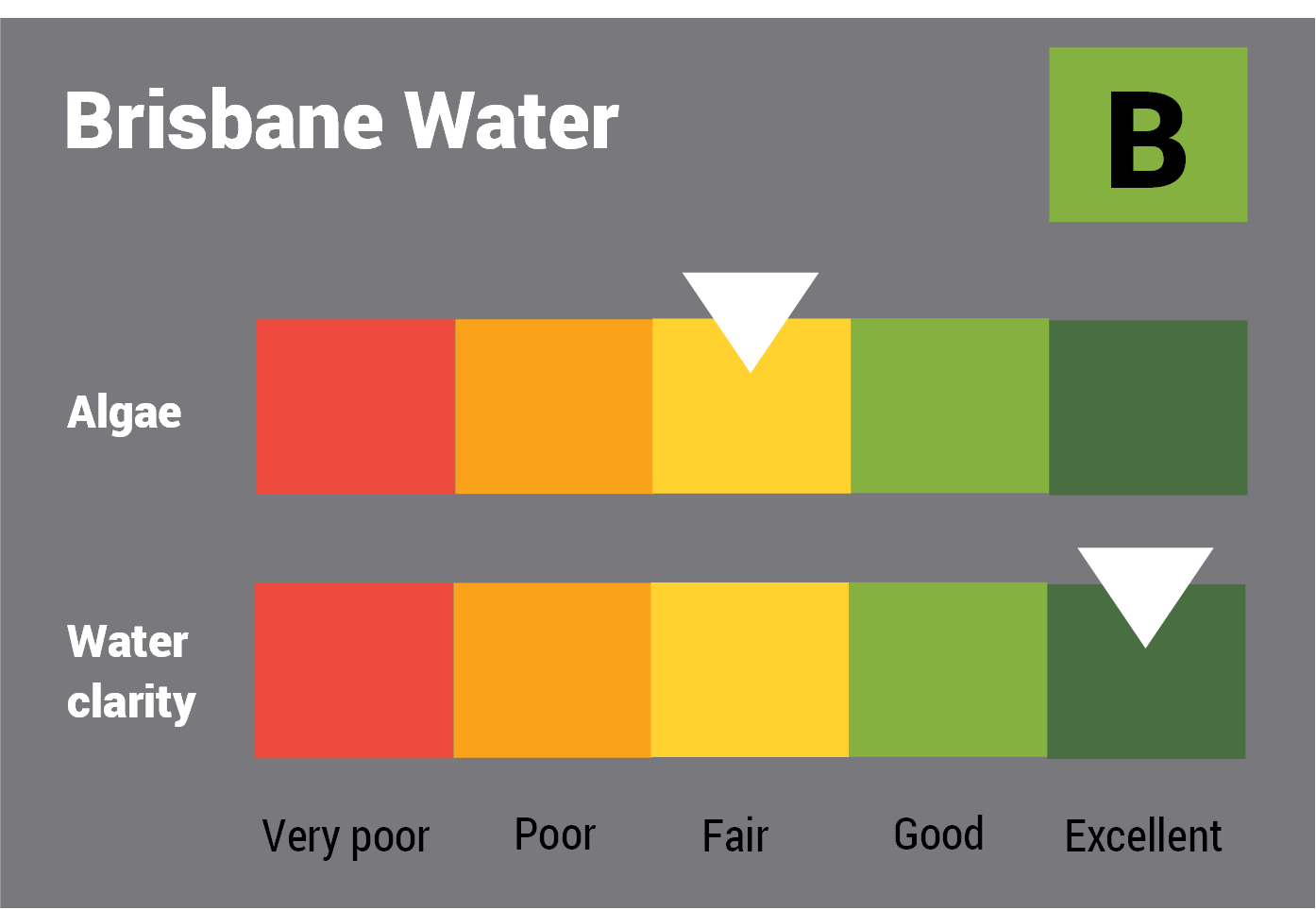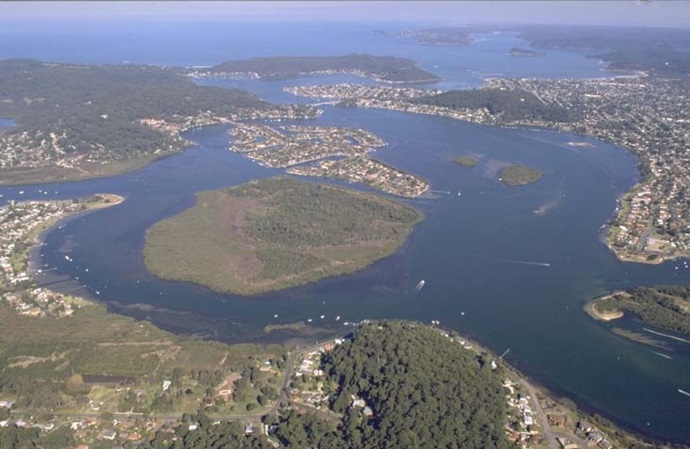Water quality
As part of our water quality monitoring program we assess the water quality and ecosystem health of an estuary using a range of relevant indicators. We sample 3 sites and a number of inflowing streams on a monthly basis over summer in Brisbane Water as part of a collaborative program with Central Coast Council.
The most recent sampling was completed over the 2020–21 summer. The results of the monitoring program, including a detailed water quality report card for Brisbane Water, are available on the the Central Coast Council website.

This report card represents 2 water quality indicators that we routinely measure: the amount of algae present and water clarity. Low levels of these 2 indicators equate with good water quality.
The report card shows the condition of the estuary was good with:
- algae abundance graded fair (C)
- water clarity graded excellent (A)
- overall estuary health graded good (B).
Find out more about our estuary report cards and what each grade means. Read our sampling, data analysis and reporting protocols and find out how we calculate these grades.
We have monitored water quality in Brisbane Water since 2010. This table shows the water quality grades for this estuary over that time.

Grades for algae, water clarity and overall are represented as:
- A – excellent
- B – good
- C – fair
- D – poor
- E – very poor.





